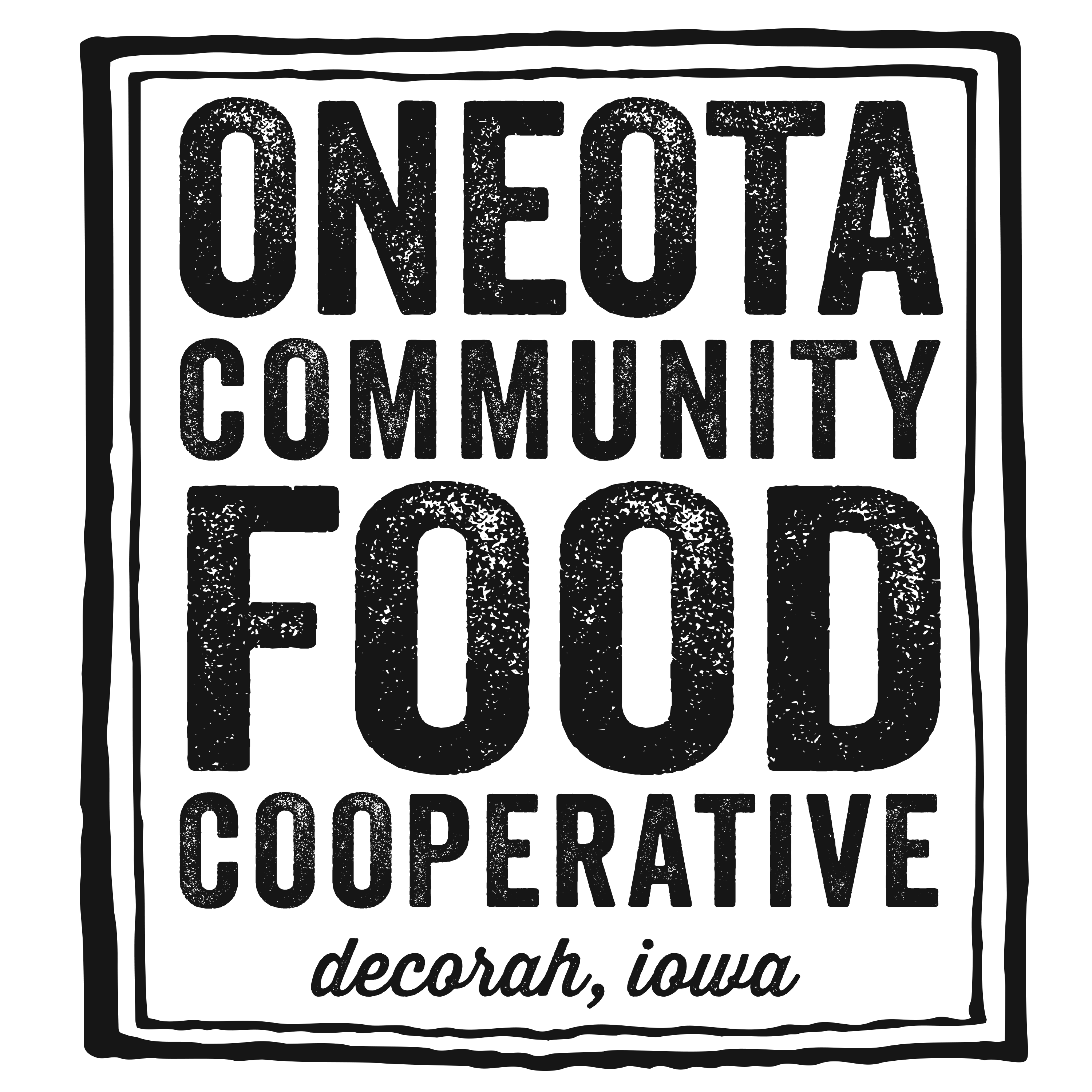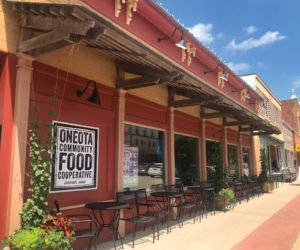By: Rebecca Eastwood
oday, when a consumer walks into a conventional supermarket, they find a dazzling array of options. A relatively recent development on this spectrum concerns organic food. When shoppers see the organic label, the assumption is often that buying that product will in some way ease the environmental burden of consumerism or contribute to the good health of the consumer. When the production and distribution of these mass-produced, corporate labels is traced, however, the aspects of health, cost, travel, standards, and ownership show the opposite side of corporate organics.
The modern organic movement unofficially began with ideals that spoke of environmental sustainability and a movement back to small, local production and distribution. With worldwide demand for organic food increasing by ten percent annually (Singer 197) making it a global multi-billion dollar market (Clark 1), agriculture corporations saw a very promising opportunity. With such a large demand for organic products, the market has quickly progressed away from small, local farm communities to the other end of the spectrum with large corporations manufacturing their own version of organic products. Mass production accounted for 46% of organic food sales in the United States in 2005 (Sustainabletable). When one considers the corporate process of organic labeling, many issues arise.
One of the reasons the organic movement took off so successfully included the assertion of physically healthier attributes. Organic can be healthy, but when distorted in certain ways by larger corporations, the health benefits begin to diminish. When organic food moves toward the processed food sector, the processing begins to cancel out the idea of healthy organic food. Processed organic junk food is still high in sugar, salt, and calories, giving different meanings to healthy and organic (Paul). As Michael Pollan states, “Organic Oreos are not a health food… Most consumers automatically assume that the word “organic” is synonymous with health, but it makes no difference to your insulin metabolism if the high-fructose corn syrup in your soda is organic.” In this case, corporate organics degrades the relationship between the concepts of organic food and healthy food.
In the case of organic food, if a consumer wants the cheapest cost, the most likely place to find that is in a mass-produced product located in a conventional supermarket. Small-scale organic food often comes at a higher cost than its conventional counterparts (Organic 101). This comes into play quite prominently due to the shift in where organic products are sold; in 1991, 7% of products were sold in conventional supermarkets whereas in 2000 that number jumped to 49% (Clark 24).
Two problems immediately arise with this disparity. First, to achieve this difference in price, corporations often cut corners on production of food, for example placing organic fields directly next to conventional fields (Sustainabletable). Secondly, according to the International Federation of Organic Agriculture Movements (IFOAM), the lowering of costs can force competition onto smaller farmers who practice more sustainable agriculture. In order to stay afloat small farmers are often driven to “look for cost-cutting opportunities rather than sustainability improvements.” (Einarsson 19). The consumer demand for cheaper food correlates to corporations finding ways to provide that, frequently by sacrificing the sustainable and just ideals of organic agriculture.
Shoppers often hear about the heinous ways in which conventionally-raised animals are treated; this however does not always stay in the conventional arena. Corporations sometimes fail to follow both the principles and certification guidelines of organic agriculture in their treatment of organically raised animals. Both the Codex Alimentarius (international set of standards on food trading), and the United States Department of Agriculture give brief mention to the organic and humane practices with which to raise animals, but these regulations are often up for debate and do not include specifics. For example, the USDA loosely defines organic standards as, “Year-round access for all animals to the outdoors, shade, shelter, exercise areas, fresh air, clean water for drinking, and direct sunlight, suitable to the species, its stage of life, the climate, and the environment…” (Electronic Code of Federal Regulations). There are little specifics attached to “access.” The organic industry of Wal-Mart provides an example of the loose interpretation of these standards. In the effort to provide organic milk as cheaply as possible, Wal-Mart and its supplier, Aurora Organic Dairy, do not always follow organic principles (Warner). Surviving on a high-grain diet rather than pasture or grass, the cows on the 3,000-4,000 count dairy farms are often on over-crowded land and are milked three times a day versus the organic standard of two (Warner). This shows the dangers of large-scale, cheap organic food when production ignores the principles that the organic movement articulates in order to provide both healthier conditions for the animals and the consumer.
Food miles present another issue between more sustainable organic practices and corporation organics. When consumers purchase packaged, processed organics, they have little hope of knowing exactly where the ingredients came from or how far they had to travel to get on the shelf in the local supermarket. The holistic organic movement stresses buying locally because it reduces agriculture’s carbon footprint through decreased shipping and consumers establish more of a connection with their producers (Sustainabletable). Large-scale corporate farming widens the gap between producer and consumer by taking organic production out of the local sphere. Whole Foods, one of the largest distributors of organic food, obtains this food from different countries, notably China (Whole Foods Market). Despite their assurances of its organic quality, the energy used to ship food internationally negatively affects the environment. In this case, the organic label does not contribute to environmentally just practices.
The consumer also becomes further removed from production when considering the increasing shift in ownership of companies. When one buys organic products, the chain of ownership behind that product often stretches quite far back. An organic label on a product brings no guarantee that the product came from an environmentally or socially conscious farm or distributor (Singer 201). The certification process for farmers comes at a high cost with extensive paperwork that smaller-scale operations find very difficult to manage (Sustainabletable), but large producers and distributors have many fewer problems. This often leads to a buy-out of small farms and consolidation of ownership, as happened in California; today five corporate farms own half of the $400 million organic produce market in the western state (Pollan).
To say that all growth in the organic market is negative, however, ignores some of the benefits of this increased popularization. Even corporate organic farming means more land is set aside from the use of chemicals and the products are reaching a wider base of people (Sustainabletable). Even so, the end goal of producers, distributors and consumers cannot simply be organic because a narrow definition of this term does not address the issues of health, cost, safety, carbon footprint, and transparent ownership. Pairing organic with ‘local’ and ‘sustainable’ as well as with corporate organics offers a more holistic approach to setting a new direction for today’s agricultural sector. The understanding of organic most often utilized by corporations can only be characterized as one aspect of the whole meaning.
When operating within the modern system of capitalism and today’s food culture, a conscious consumer cannot fully eradicate corporate organics from their shopping list. A mass movement to local, sustainable, organic food would mean a cultural shift in both the way we think about food and how society organizes around the farm in order to guarantee access to local, organic food for everyone. ‘Conventional’ food and supermarkets would need to be redefined to mean organic. As long as the current capitalist, consumer-driven system reigns, shoppers need to understand and be aware of the various organic labels used. Consumers must continue to analyze corporate organics and their role in the organic movement.
Works Cited
Clark, Lisa F. “Globalization, Corporatization, and the Organic Philosophy: Social Sustainability in Question.” Progressive Economics. Simon Fraser University, 2007. Web. 22 Sept. 2011. http://www.progressive-economics.ca/wpcontent/uploads/2007/07/lisaclark.pdf.
Einarsson, Peter, and Louise Luttikholt. “Organic Agriculture and Globalization.” International Federation of Organic Agriculture Movements, Oct. 2006. Web. 22 Sept. 2011.http://www.ifoam.org/organic_facts/politics/pdfs/OA_Globalization_BackgroundPaperpdf.
“Electronic Code of Federal Regulations.” GPO Home Page. National Archives and Record Administration, 27 Sept. 2011. Web. 29 Sept. 2011. http://ecfr.gpoaccess.gov/cgi/t/text/textidx?c=ecfr;sid=e6094a795daa65cecfa0205fe4eec801;rgn=div8;view=text;node=7:3.1.1.9.32.3.354.13;idno=7;cc=ecfr.
“Everything I Need to Know About Organic Foods.” The World’s Healthiest Foods. The George Mateljan Foundation. Web. 29 Sept. 2011. http://www.whfoods.com/genpage.php?tname=faq.
Gold, Mary V. “Sustainable Agriculture: Definitions and Terms (1999; Revised 2007; Updated Links 6/9/08).” National Agricultural Library. United States Department of Agriculture: Agricultural Marketing Service, 2007. Web. 29 Sept. 2011.http://www.nal.usda.gov/afsic/pubs/terms/srb9902.shtml.
Howard, Philip H. “Organic Processing Industry Structure.” Michigan State University. Est. 1855. East Lansing, Michigan USA. Michigan State University, 2009. Web. 27 Sept. 2011. https://www.msu.edu/~howardp/organicindustry.html.
Kuepper, George, and Lance Gegner. “Organic Crop Production Overview.” Home Page: NCAT Sustainable Agriculture Project. 2004. Web. 27 Sept. 2011. https://attra.ncat.org/attra-pub/viewhtml.php?id=66.
“Organic 101.” The Organic Center. 2011. Web. 27 Sept. 2011. http://www.organic-center.org/organic101.html.
“Organic, Difference between Organic and Sustainable – The Issues – Sustainable Table.” Sustainabletable. Grace Communications Foundation, Sept. 2009. Web. 27 Sept. 2011. http://www.sustainabletable.org/issues/organic/.
“Organic Labeling and Marketing Information.” National Organic Program. United States Department of Agriculture: Agricultural Marketing Service, Apr. 2008. Web. 27 Sept. 2011. http://www.ams.usda.gov/AMSv1.0/getfile?dDocName=STELDEV3004446&acct=nopgeninfo.
Paul, Maya W., Gina Kemp, and Robert Segal. “Organic Foods: Understanding Organic Food Labels, Benefits, and Claims.” Helpguide.org. Aug. 2011. Web. 27 Sept. 2011. http://helpguide.org/life/organic_foods_pesticides_gmo.htm.
Pollan, Michael. “Behind the Organic-Industrial Complex – Michael Pollan.” Wes Jones Home Page. 2005. Web. 29 Sept. 2011. http://www.wesjones.com/pollan2.htm.
Pollan, Michael. “Chapter Three: Mostly Plants: What To Eat.” In Defence of Food: The Myth of Nutrition and the Pleasures of Eating. London, England: Allen Lane, 2008. 161-81. Print.
“Quality Foods from Sources You Can Trust.” Whole Foods Market: Natural and Organic Grocery. Whole Foods Market IP, L.P., 2011. Web. 29 Sept. 2011. http://www.wholefoodsmarket.com/products/sourcing.php.
Resnick, Carole. “Corporate Organic Takeover.” Syracuse Peace Council. Web. 27 Sept. 2011.http://www.peacecouncil.net/pnl/03/718/718CorporateTakeover.htm.
Singer, Peter, and Jim Mason. The Ethics of What We Eat: Why Our Food Choices Matter. [Emmaus, Pa.]: Rodale, 2006. Print.
Warner, Melanie. “A Milk War Over More Than Price – New York Times.” The New York Times. 16 Sept. 2006. Web. 27 Sept. 2011. http://www.nytimes.com/2006/09/16/business/16milk.html?_r=1.



